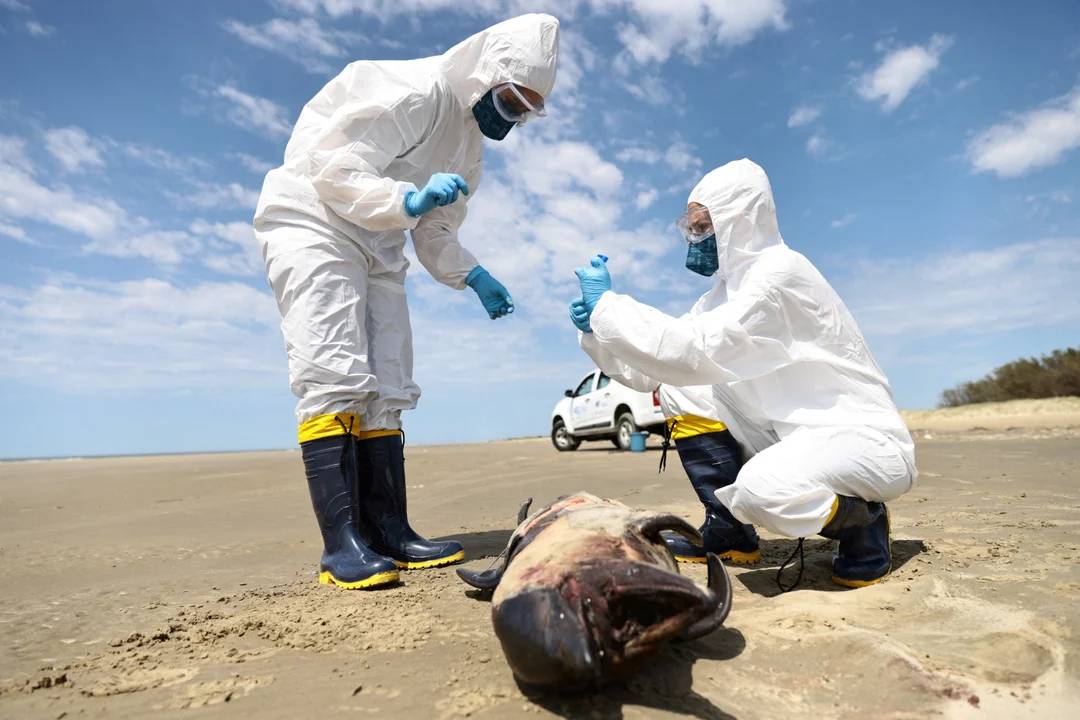Since arriving in South America in 2022, the deadly H5N1 avian influenza virus is spreading more vigorously among wild birds and marine mammals than ever before, increasing the risk of it becoming a major threat to humans.based on interviews with eight scientists.
Even more worrying is evidence that the disease, once largely restricted to birds, now appears to be spreading among mammals. The virus has killed several dolphins in Chile and Peru, some 50,000 seals and sea lions along the coast, and at least 500,000 birds across the region.
To confirm transmission between mammals, scientists may have to test the infection in live animals.
“This has almost certainly happened,” said Richard Webby, a virologist at St. Jude Children’s Hospital in Memphis, Tennessee. He added: “Without mammal-to-mammalian transmission, it would be difficult to Explain some of these mass infections and deaths.”
Scientists told Reuters the virus has appeared in dozens of bird species, including some migratory birds that can spread the virus beyond the region.
As climate change intensifies, animals will be forced to move to new territories, mix with each other in new ways, and potentially increase the chances that viruses will continue to mutate.
“It’s only a matter of time before the first South American strain is detected in North America,” said Alonzo Alfaro Nunez, a viral ecologist at the University of Copenhagen.
man-made risk
Amid growing concerns, the 35 countries of the Pan American Health Organization (PAHO) convened experts and regional health officials A conference in Rio de Janeiro this week.
The Pan American Health Organization plans to establish the world’s first regional committee to oversee avian influenza surveillance and response, an official told Reuters. This situation has not been previously reported.
Since the virus was first detected in Colombia in October 2022, two human cases have been detected on the continent, one in Ecuador and the other in Chile. Both are caused by contact with infected birds.
Although all those patients survived, About 60% of global H5N1 avian influenza cases are fatal to humans.
Experts say without evidence of human-to-human transmission or mutations targeting human receptors, the World Health Organization is unlikely to increase the risk level in humans from the current “low” level.
Drugmakers such as GlaxoSmithKline (GSK) and Moderna say they are developing human bird flu vaccines and have the ability to use flu vaccine production lines to produce hundreds of millions of doses within months.
“We’re seeing (the virus) take small evolutionary steps that, in the long run, are May cause infection in humans.” Every year, large numbers of elephant seals raise their pups in the Valdes Peninsula on Argentina’s Atlantic coast.
Last November, Van Strayer encountered a heartbreaking sight: hundreds of hatchlings dead and rotting on the beach. Researchers estimate that 17,400 pups died, almost all born in the colony that year.
According to scientists, it is unlikely that any of these puppies were infected by the birds. Pups usually only have contact with their mothers, leading scientists to suspect that this is how the virus is spread.
Van Strels is part of a team of scientists in South America working to track genetic mutations in the virus.
In a draft posted on the CDC website, they analyzed samples of sea lions, seals and birds from the coast of the Valdes Peninsula. By comparing the genomes of these samples with earlier samples collected in North America and Asia in 2022, the team discovered nine new mutations.
The same mutation was found in samples collected in Chile and Peru in 2022 and 2023, which were also affected by mass die-offs of sea lions and birds.
“This is the first time this virus has been so adapted to wild animals,” Van Strels said. “Clearly something happened in Peru and northern Chile where they acquired these new mutations.”
In a draft paper, the researchers noted that the same mutation appeared in one of two human cases on the African continent, a 53-year-old man who lived a block from the coast where seabirds gather. place.
The researchers said the case “highlights the potential threat these viruses pose to public health.”
Argentina News-(Information from Reuters)

